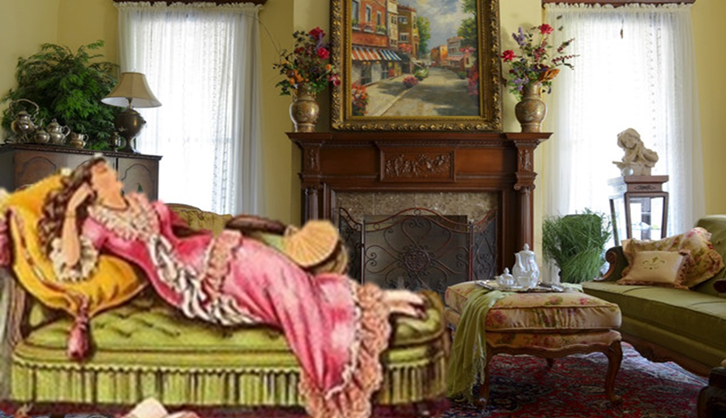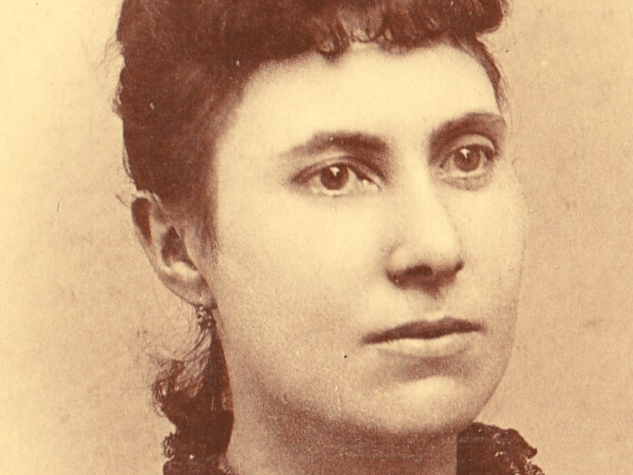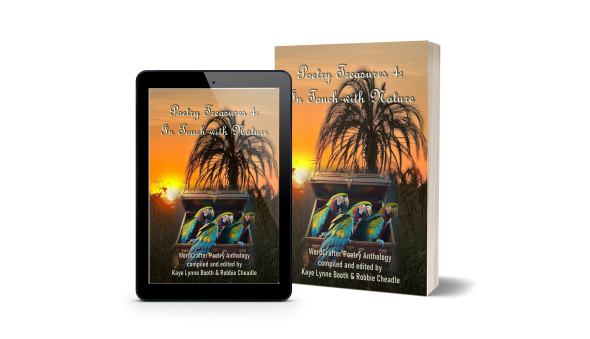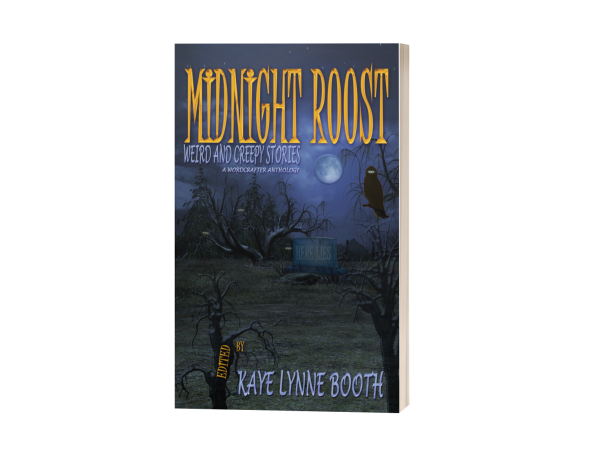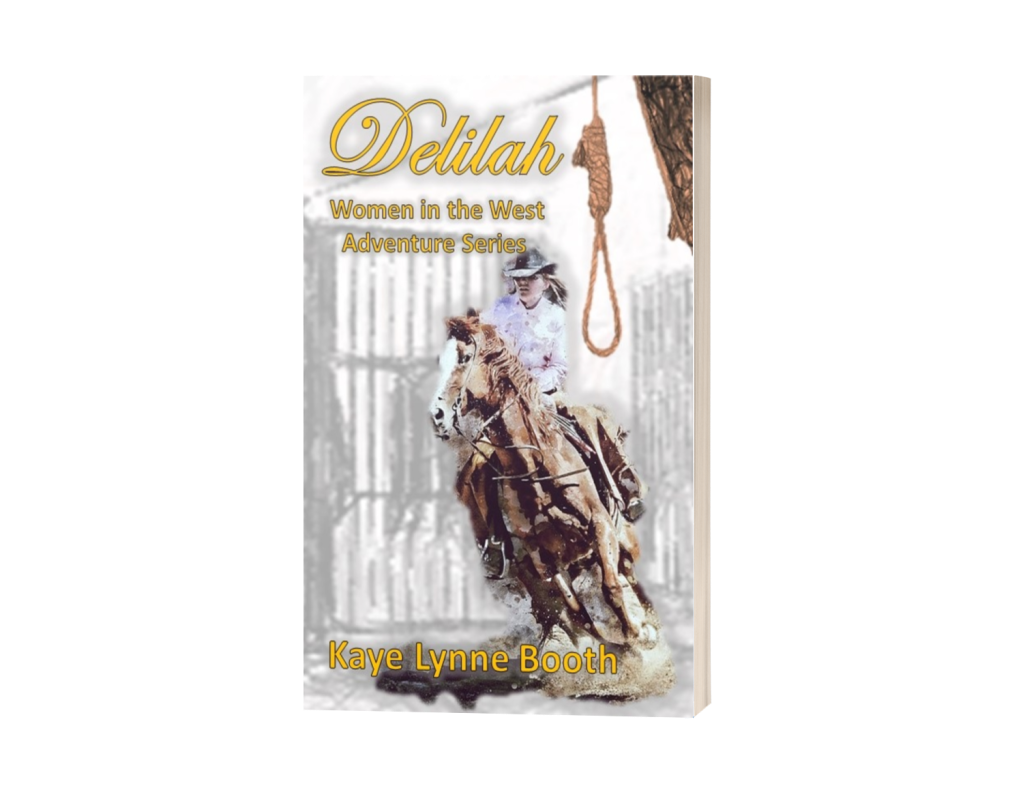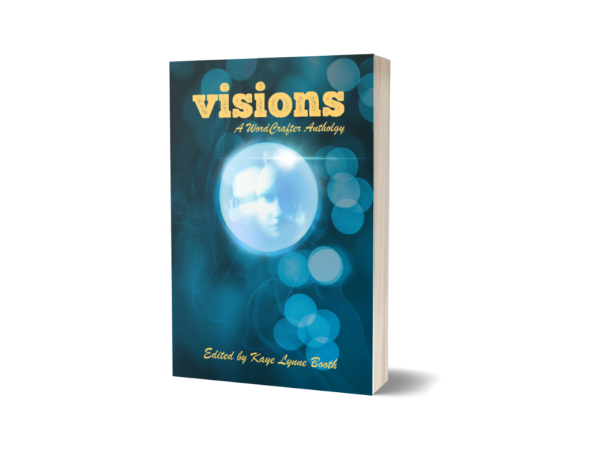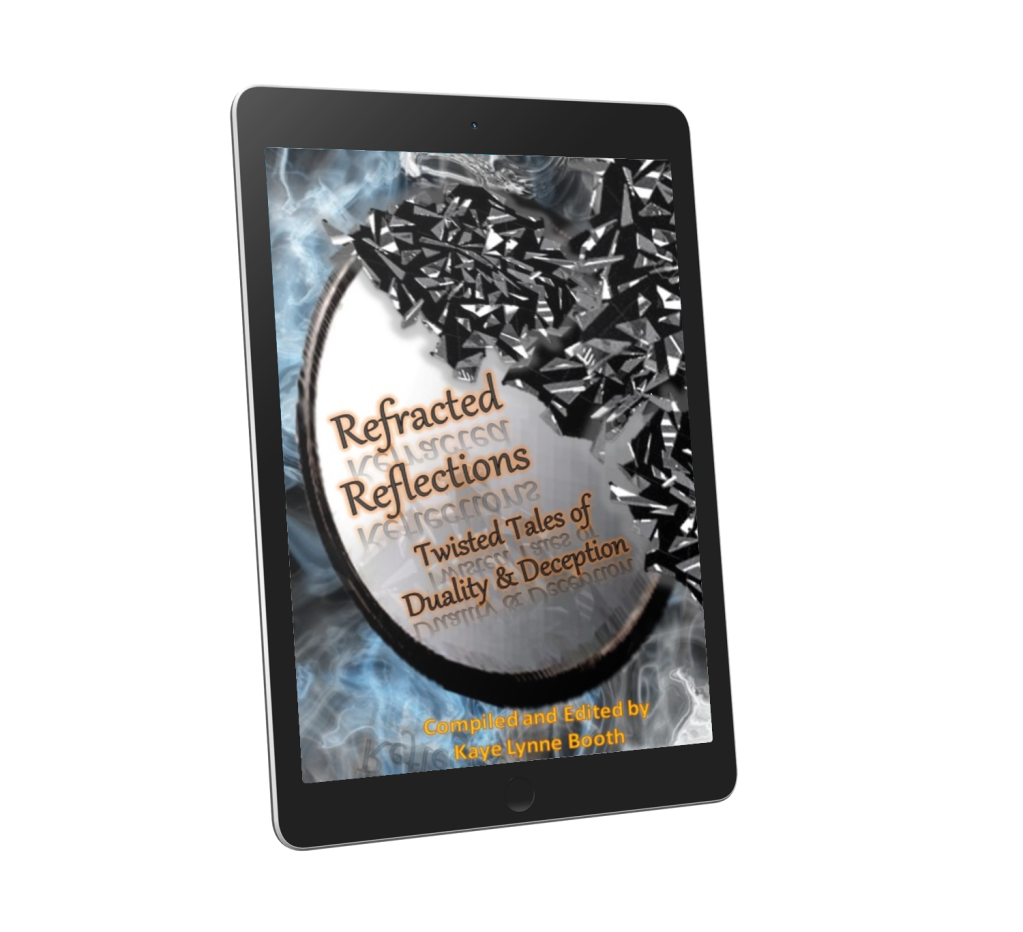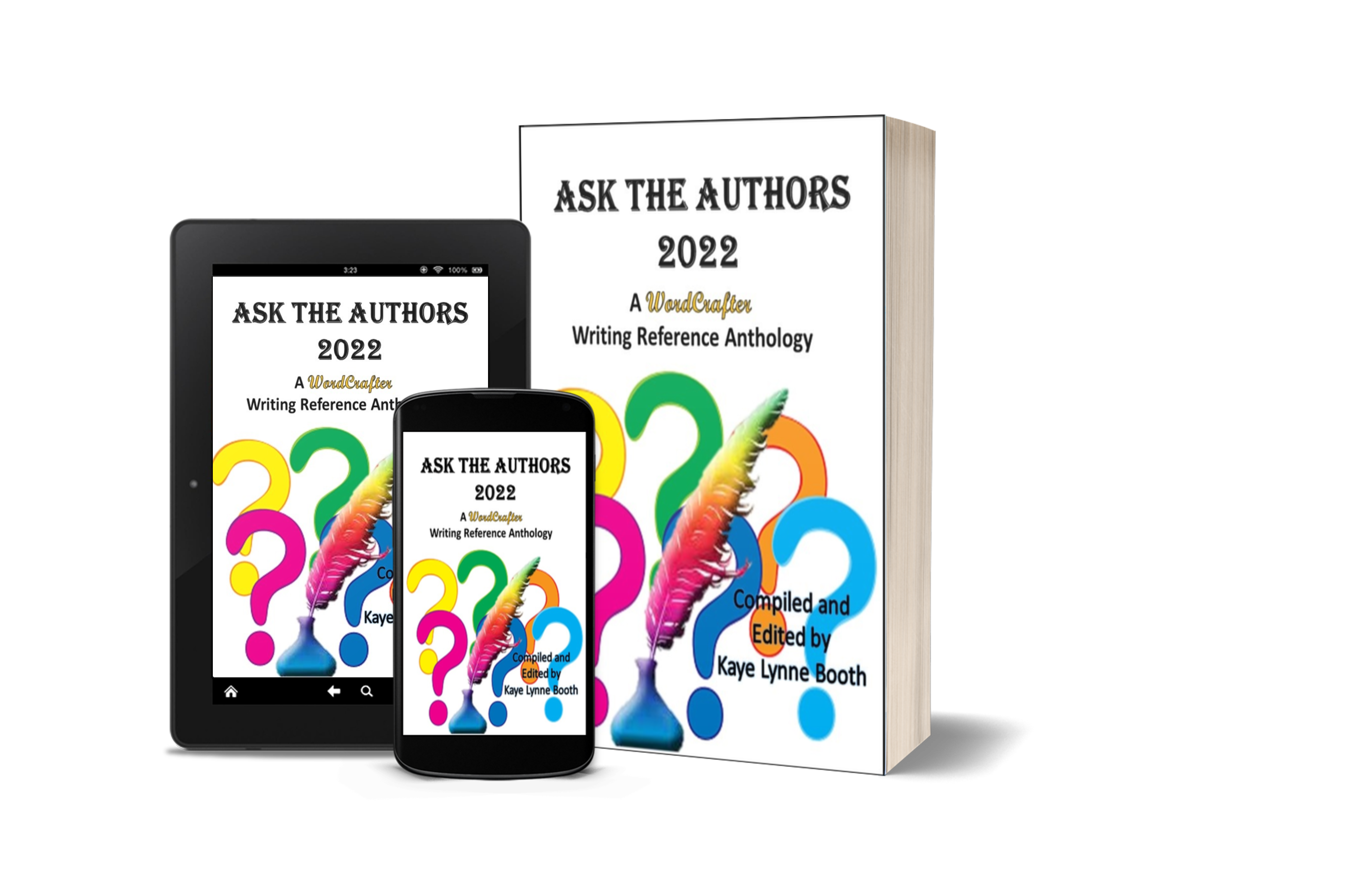Book Review: Peacemaker’s Dream
Posted: May 24, 2024 Filed under: Book Review, Fiction, Historical Fiction, Review, Women in History, Women's Fiction | Tags: American History, Book Review, Historical Fiction, Peacemaker's Daughter, Pocohantas, Sue Wright, Writing to be Read 4 CommentsAbout the Book
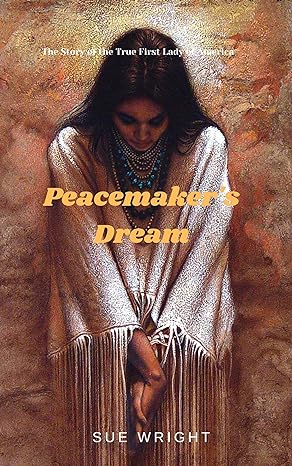
If you like fast paced historical fiction… this hidden gem will have you burning the midnight oil!
She was young, smart and principled.
They were out to get her. She never gave up… and neither did they…
In a story based on fact, you will discover the heart wrenching account of the struggles of a nation under siege unprepared for the sophistication of its invader. Their most effective weapon was a young girl who has mistakenly been portrayed as a cartoon character in modern culture…
The record is now being put straight.
You will cry at her loves and losses, you will smile at her mischief, but you will finally know the truth!
Purchase Link: https://www.amazon.com/Peacemakers-Dream-True-First-America-ebook/dp/B08SHVD78J/
My Review
The beautiful cover on this book is what drew me to it on Freebooksie. I thoroughly enjoyed every word of Peacemaker’s Dream: The Story of the True First Lady of America, by Sue Wright. This book tells a the story of the life of Pocahantas, an interesting and often misunderstood period in American history. It made me rethink my ideas about that first Thanksgiving, I can tell you that.
A young Powhaten Indian princess believed to have been prophesied to be the link for peace between her people and the strange white settlers who have invaded their lands. That’s a lot of weight placed on a young girl’s shoulders. But the white settlers began early on in a pattern of greed, trickery, and broken promises, and they do not hesitate to use a young squaw for leverage to get what they want. Taken from her people and abused both mentally and physically, Pocahantas draws strength from the belief in her destined role of peacemaker for her people and tries to make a new life for herself among the white settlement with the constant threat of having it all taken away looming over her.
I always knew Pocahantas played a role in the foundations of America, but I did not realize how great one young Pohowtan girl’s sacrifice for peace was. I give Peacemaker’s Daughter five quills.
____________________________________
Kaye Lynne Booth does honest book reviews on Writing to be Read in exchange for ARCs. Have a book you’d like reviewed? You can request a review on the Book Review tab above.
Review in Practice: How to Market a Book
Posted: May 20, 2024 Filed under: book marketing, Book Promotion, Books, Nonfiction, Review, Review in Practice, Writing Resource | Tags: How to Market a Book, Nonfiction, Review in Practice, Ricardo Fayette, Writing Reference, Writing to be Read 6 CommentsAbout the Book
Writing a book is hard. Marketing it can be even harder.
Marketing a book in 2023 can seem like a full-time job, what with the crazy number of things authors seem to be expected to do: social media, blog tours, advertising, price promotions, mailing lists, giveaways, you name it.
But here’s a little secret: you don’t need to do all those things to successfully set your book on the path to success. What you need is a solid plan to find the one or two tactics that will work, and start to drive sales… in a minimum amount of time. And that’s exactly what you’ll find in this book.
Instead of drowning you in information or inundating you with hundreds of different tactics and strategies that eventually prove fruitless, this book will guide you through a step-by-step framework to find the ones that actually work for you and your book, so that you can start marketing more efficiently.
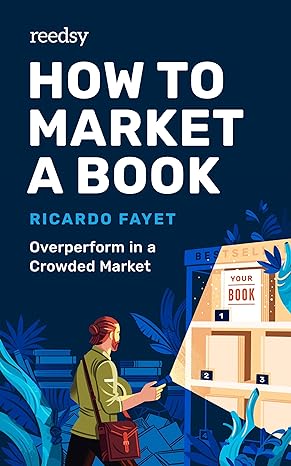
In particular, you’ll learn:
✔️ How to change your mindset and sell more books with less effort.;
✔️ How to write books that guarantee a lasting, profitable career;
✔️ How to get Amazon’s Kindle Store to market your book for you;
✔️ How to get thousands of readers into your mailing list before you even release the book;
✔️ How to propel your book to the top of the charts at launch; and
✔️ How to automate your marketing so that you can spend less time marketing and more time writing,
After helping over 150,000 authors crack the marketing code through a popular weekly newsletter, Reedsy’s Co-founder Ricardo Fayet is sharing everything he’s learned over the past few years in this beginner-friendly, jargon-free guide to book marketing.
Purchase Link: https://www.amazon.com/How-Market-Book-Overperform-Marketing-ebook/dp/B08TZJQ1FB
___________________________________________
Today’s author needs to be able to do all stages of the publishing process in order to run their author business, but one person cannot do it all. It can be overwhelming, even for the D.I.Y. author. (That’s me. 😉 ). I share my experience and knowledge about doing my marketing and promotions myself in my book, The D.I.Y. Author, which will be released on June 4th, 2024. But learning to run an author business doesn’t end when you publish a book, and although I just wrote a book about building and growing your author business, I still have much to learn on this never ending road to success. That’s why I took advantage of the free ebook by Reedsy‘s Ricardo Fayette, How to Market Your Book: Overperform in a Crowded Market. Fayette knows a lot more than I do on the subject of book marketing, so I refer my readers to his book in my book.
I don’t do paid advertising, and that is what a good portion of this book is about.
“But couldn’t I reach a larger audience with paid advertising?” Absolutely.
Someday, I hope to be able to expand into the paid advertising arena, so I read through those sections, and I must say, Ricardo Fayette explains things in such a way that even someone like me, who gets headaches when thinking analytics, can understand, and he is very thorough. He lays out the differences between Amazon Ads, Facebook Ads, and BookBub Ads, weighing the pros and cons of each. And man, did I learn a lot, particularly about BookBub Ads. He really gave me a lot to think about. Hopefully, I will be able to include what I’ve learned about paid advertising from this book in the revised edition of The D.I.Y. Author by putting it into practice at a future date.
Fayette also talks about the importance of a mailing list and how to set up a newsletter with a reader magnet, reminding me of another area where my efforts have been lacking. He compares several email servers and offers the basics of a good newsletter. I set out two years ago to find a new email server because I wasn’t happy with MailChimp. But things got busy and life happened, and my quest for an email server got laid to the side. I opted to stick with what I knew, not wanting to take the time to learn a new server system, let alone the time it takes to research them first. This book offers a list with some I wasn’t familiar with which are geared more toward authors. This peaked my curiosity, as it sounded like it might be just what I’m looking for. I haven’t sent out a newsletter in over six months, and my readers have probably forgotten me. This might be the motivation that I need to get a newsletter up and running, and keep it running.
He shares tips for working the Amazon system, as well as some of the other retailers, for those who publish wide. He even talks about selling direct from your website, and how to make each of these methods work for you. He covers keywords, backcover copy and book covers.
On the subject of book covers, I have to disagree with him as he insists you must outsource your book cover with an expensive professional cover designer. I do outsource many of my book covers because I’d rather put my time into my writing, but although I am a writer and not a book designer, I posess the design knowledge and most of the skills to create a good book cover. I designed the covers for my Women in the West Adventure Series and I’m quite happy with them. I wasn’t happy with the cover I did for The Rock Star & The Outlaw, so I outsourced it to someone who had more skill than I did, and changed the cover three months after publication. So, while I’m not saying you shouldn’t outsource your book covers, I don’t think that it is an absolute necessity. While Fayette is adament on this point, reminding us of it repeatedly throughout the book, I guess we’ll just have to agree to disagree on this one.
This is one of the most comprehensive books on book marketing that I’ve come across, and one I will be referring back to many times in the future as I grow and expand my author business. A great value from a free book.
_________________________________________________
About Author Kaye Lynne Booth
For Kaye Lynne Booth, writing is a passion. Kaye Lynne is an author with published short fiction and poetry, both online and in print, including her short story collection, Last Call and Other Short Fiction; and her paranormal mystery novella, Hidden Secrets; Books 1 & 2 of her Women in the West adventure series, Delilah and Sarah, and her Time-Travel Adventure novel, The Rock Star & The Outlaw. Kaye holds a dual M.F.A. degree in Creative Writing with emphasis in genre fiction and screenwriting, and an M.A. in publishing. Kaye Lynne is the founder of WordCrafter Quality Writing & Author Services and WordCrafter Press. She also maintains an authors’ blog and website, Writing to be Read, where she publishes content of interest in the literary world.

_______________________________________________
Want exclusive content? Join Kaye Lynne Booth & WordCrafter Press Readers’ Group for WordCrafter Press book & event news, including the awesome releases of author Kaye Lynne Booth. She won’t flood your inbox, she NEVER sells her list, and you might get a freebie occasionally. Get a free digital copy of her short story collection, Last Call and Other Short Fiction, just for joining.
Book Review: An Ear for Murder
Posted: May 17, 2024 Filed under: Book Review, Books, cozy mystery, Fiction, Mystery, Review | Tags: An Ear for Murder, Book Review, cozy mystery, Diane Weiner, Writing to be Read Leave a commentAbout the Book

Oboist Sara Baron agrees to cat sit for a childhood friend but instead of being greeted by a meowing fluff ball, she walks into a ransacked house and stumbles over her friend’s dead body. Frantic, she runs next door and enlists the help of a mysterious stranger who knows more than he admits. His charm, not to mention his deep chestnut eyes, is balanced by his guardedness, unexplained absences, and seemingly nonexistent past. Is he helping her expose the murderer, or covering his tracks? Meanwhile, Sara battles a career threatening affliction, and helps keep the family music business afloat all while looking for instrumental evidence to put the murderer behind bars.
Purchase Link: https://www.amazon.com/Murder-Sara-Baron-Tuned-Mystery-ebook/dp/B08716ZSSX/
My Review
An Ear for Murder, by Diane Weiner, is A Sara Baron Tuned in Mystery, which is to say the protagonist and ametuer slueth is a musician. This is a cute cozy in which the protagonist falls into the middle of a murder mystery and is driven to solve it. This one is slow paced as the clues are uncovered, but it contains plenty of climactic moments.
Sara Baron makes a visit to her hometown when an affliction threatens to end her career as an oboist. But the friend she is staying with is murdered, and Sara sets out to find out who did it, and why, throwing her into the killer’s sites. Who the killer is remains a mystery, and the list of suspects grows, as the tension rises as each strange occurance becomes more dangerous. Then there’s the mysterious next door neighbor guy whose strange behavior makes him suspect, even though she wants to believe he’s one of the good guys. If she’s wrong, it could mean her life.
An Ear for Music contains all the right notes to create a cozy mystery in the tune of murder. I give it four quills.
______________________________________
Kaye Lynne Booth does honest book reviews on Writing to be Read in exchange for ARCs. Have a book you’d like reviewed? You can request a review on the Book Review tab above.
Winners of the Wordcrafter “Sarah” Book Blog Tour Giveaway & a Reminder
Posted: May 12, 2024 Filed under: Blog Tour, Books, Fiction, Giveaways, Historical Fiction, Historical Inspiration, Western, Women in History, Women's Fiction, WordCrafter Book Blog Tours, WordCrafter Press | Tags: Giveaway, Historical Fiction, Historical Inspiration, Kaye Lynne Booth, Sarah, Western, Women in the West, Women's Fiction, WordCrafter Book Blog Tours 9 CommentsWe had a great tour for Sarah: Book 2 of the Women in the West Adventure Series, although I would have liked to see a bigger turnout. I enjoyed sharing about myself and about the research and inspiration behind the book with all of you, and I may have made new friends along the way. Thanks to everyone who participated for helping me launch this wonderful book.
The Winners Are…
Each comment on the tour earned an entry in the tour giveaway and a chance to receive a free digital copy of Sarah. So without futher ado…
Drumroll Please.
The winners of the WordCrafter Sarah Book Blog Tour are…
- Author Jan Sikes
- Priscilla Bettis
- Thomastigwikman
Congratulations to the winners!
Please contact me at kayebooth@yahoo.com to receive your free digital copy of Sarah.
Reminder
Today is the last day for tour participants to get a signed print copy of Sarah: Book 2 of the Women in the West Adventure Series. This is an exclusive offer for the tour – my way of saying thanks for your support. Tomorrow it will no longer be available, so get ’em while you can!
__________________________________
Book your WordCrafter Book Blog Tour today!
Book Review: The Texian Prisoners
Posted: May 10, 2024 Filed under: Book Review, Books, Fiction, Historical Fiction, Review, Western | Tags: Book Review, Historic Fiction, Loretta Miles Tollefson, The Texian Prisoners, Western, Writing to be Read Leave a commentAbout the Book

They called themselves “Texians.”
In Fall 1841, a band of roughly 300 men straggled out of the Staked Plains into New Mexico. They had intended to claim everything east of the Rio Grande for Texas. Instead, they were captured and sent south to El Paso del Norte, then on to Mexico City. The largest group of prisoners, which included journalist George Wilkins Kendall, was escorted to El Paso by Captain Damasio Salazar. Five prisoners died on that trek. Kendall would later write a book describing the experience, a book which accused Salazar of food deprivation, mutilation, and murder, and fed the glowing coals that would become the Mexican-American War.
But what really happened on the way to El Paso? The Texian Prisoners tells the story through the eyes of Kendall’s friend George Van Ness, a lawyer burdened with the ability to see his enemy’s point of view, and asks us to consider the possibility that Kendall’s report was not unbiased.
A historically accurate retelling of Larry McMurtry’s Dead Man’s Walk, this fictional memoir will make you question everything you thought you knew about Texas, New Mexico, and the boundary between them.
Purchase Link: https://www.amazon.com/Texian-Prisoners-Biographical-Novel-Mexico-ebook/dp/B0CQ9TYK9L/
My Review
I received a digital copy of The Texian Prisoners from author Loretta Miles Tollefson in exchange for an honest review. I am a fan of Tollefson’s historical western fiction and have reviewed several of her books:
I always learn much I did not know from Tolleffson’s well researched books, and The Texian Prisoners did not disappoint. I knew very little about this time period in Old New Mexico, which takes place prior to and was a precursor to the Mexican American war. It was a violent time and so many lost their lives in the struggle for independence, this story tells of the men who declared the independence of Texas, demanding recognition of both the United States and Mexico, and were subsequently captured by the Mexican militia and marched across the brutal landscape under harsh conditons to Mexico City to await the judgement of Santa Anna.
This story is well-crafted and well-written, making me feel the discomforts the Texian prisoners were subjected to as if I were marching along the trek with them. Tollefson has an uncanny ability to get into her historical character’s heads and bring it to the page. The story is told from the point-of-view of McCaferty, the only Spanish speaking prisoner, who was used as interpreter, and who was in a position to speak up for his fellow prisoners. Tollefson has done her homework, combing through diaries and documents to bring this true life journey to the page, offering the viewpoints of the prisoners as well as a peek into the the motivation behind the actions of the Mexican leaders. Such a journey would undoubtedly change the lives of those who endured it, prisoners and captors alike.
An enthralling story that will keep you reading to the end and may teach you a thing or two about this country’s history. I give The Texian Prisoners five quills.
____________________________________
Kaye Lynne Booth does honest book reviews on Writing to be Read in exchange for ARCs. Have a book you’d like reviewed? You can request a review on the Book Review tab above.
Day 4 of the WordCrafter “Sarah” Book Blog Tour
Posted: May 9, 2024 Filed under: Blog Tour, Book Promotion, Book Release, Books, Fiction, Giveaways, Historical Fiction, Western, Women in History, Women's Fiction, WordCrafter Book Blog Tours, WordCrafter Press 16 Comments
It’s Day 4 of the WordCrafter Sarah Book Blog Tour and I’m pleased to welcome you all back to Writing to be Read for my post on ‘Modern Medicine’ & Women’s Suffrage in the American West, and how they played a part in the book. But first, I have something special to offer today. A special thank you for dropping in and following the tour, not available anywhere else. The offer is only available through Sunday and then the PayPal button will be gone, so get your copy now.
‘Modern Medicine’ & Women’s Suffrage in the American West
As Hair of Fire, Sarah had been the acolyte of the Ute Medicine Woman. She earns her keep in Glenwood Springs by using these healing skills, which are gladly accepted by the women of the community, who are tired of being but not so well received by most of the men. They rejected her primitive heathen ways in favor of methods of ‘modern medicine’ practiced by the overpriced and overrated doctor. When I looked at what these “modern” practices consisted of, I had to wonder if the primitive methods were much more inferior.
Female Hysteria
Many of the values in the west had been handed down from the Victorian era, and women were expected to don any number of binding and uncomfortable undergarments to appear prim and proper. Respectable women and soiled doves of the higher classes were forced to wear tight-laced corsets, layers of petticoats and bustles – the former, by their husbands, and the later by their employers. It was house rules at the Old Homestead House brothel in Cripple Creek, Colorado, that ladies weren’t allowed into the parlor and entertainment areas of the house without proper corseted attire.
Corsets were binding, especially when crossed-laced and pulled tight to give the women the hourglass figure that was the trend at the time, cutting off breath, and sometimes even fracturing ribs. Most homes and brothels were furnished with at least one fainting couch, as light-headedness and fainting were common experiences for women of the day.
Men of the day attributed fainting spells and any other female behaviors they didn’t deem appropriate to female hysteria, one of the most common diagnosed illnesses for women through the 18th and 19th centuries. Fainting, headaches, backaches, anxiety, depression, infertility, and even a fondness of writing might be attributed to the ‘disorder’ of female hysteria.
There were a variety of treatments which might be prescribed for this malady, which didn’t seem to affect persons of the male gender, but was specific to the fairer sex, including rest and isolation, dietary changes, ‘hysteric hypnosis’, hydrotherapy, pelvic massage, and ‘vibratory massage’.
- The ‘rest cures’ often involved lying immobilized for extended periods of time, isolating the afflicted away from societal view indefinitely.
- The use of ‘hysteric hypnosis’ involved women being placed under hypnosis in search of past traumas as the root of the affliction.
- Cold showers, warm baths, and localized water sprays were utilized in hydrotherapy to reduce nervousness and anxiety, and restore equilibrium.
- ‘Vibratory Massage’ and Pelvic massage were the most common treatments prescribed for the treatment of hysteria. They involved manual or mechanical manipulation of the female pelvic regions, the goal being to relax the subject and release tension. Treatments were performed by male doctors on female patients, so it is not surprising that these were the most commonly prescribed. Perhaps the women probably weren’t complaining about these treatments. They may have been quite pleasant to undergo. But, when their symptoms didn’t seem to decrease with repeated treatments, you would think the men might have had second thoughts.
The Women’s Suffrage Movement
In 1887, the women’s suffrage movement was a ripple which would eventually become a huge wave across the nation, earning women the right to vote and giving them voices that demanded to be heard over time. Most women in the American West at this time were wives and mothers, or lived in their parents’ or relatives’ homes, although there were some, like my characters Lillian and her girls, or Big Nose Kate, who found themselves alone in the world after husbands or parents passed on, or chose to strike out on their own, independent of a man. With few options to make a living, many of these women were prostitutes or madams.
In the story of Sarah, it doesn’t take long for a young girl used to living among the Utes, where the women wore comfortable clothing to necessitate free movement to carry out the day-to-day tasks of tribal living to put ideas in the heads of the women of Glenwood Springs and stir them into action. To find out what happens though, you’ve got to read the book. 😉
References
“Treating Hysteria in the 19th Century: Methods and Controversies”. 19th Century Events and Developments. https://19thcentury.us/hysteria-treatment-19th-century/
“The Classification of Hysteria and Related Disorders: Historical and Phenomenal Considerations”. The National Library of Medicine. https://www.ncbi.nlm.nih.gov/pmc/articles/PMC4695775/
Baloh, Robert W. 1 December 2020. “The Golden Age of Histeria”. Spring Link. https://link.springer.com/chapter/10.1007/978-3-030-59181-6_3
“Overview: Medicine 1800-1899”. Encyclopedia.com. https://www.encyclopedia.com/science/encyclopedias-almanacs-transcripts-and-maps/overview-medicine-1800-1899 Cohut, Maria PhD. 13 October 2020. “The Controversy of ‘Female Hysteria’”. Medical News Today. https://www.medicalnewstoday.com/articles/the-controversy-of-female-hysteria
______________________________________________
About the Book
Sarah is a young girl trying to make a place for herself in the world.
Sarah is not the young girl stolen away from Delilah anymore. Now she is Hair of Fire, mate of Three Hawks, even as she blossoms into a young woman and tries to make a place for herself among the Ute tribe.

When she is stolen away from the life she’s made, she struggles to survive in the heart of the Rocky Mountains. A streak of stubbornness and determination take this tough, feisty heroine up against wild beasts of the forest and the rugged mountain landscape to Glenwood Springs, Colorado, where she receives a less than welcoming reception by some.
Will this young woman find her way back to the Ute tribe, which she’s come to think of as family, or will she discover a place among the colorful inhabitants of the Colorado hot springs and mining town?
Follow along on her journey to learn who she truly is and where she belongs in this rough, and often hostile frontier.
If you like strong and capable female protagonists, you’ll love Sarah.
Purchase Link: https://books2read.com/Sarah-Women-in-the-West
About the Author
For Kaye Lynne Booth, writing is a passion. Kaye Lynne is an author with published short fiction and poetry, both online and in print, including her short story collection, Last Call and Other Short Fiction; and her paranormal mystery novella, Hidden Secrets; Books 1 & 2 of her Women in the West adventure series, Delilah and Sarah, and her Time-Travel Adventure novel, The Rock Star & The Outlaw. Kaye holds a dual M.F.A. degree in Creative Writing with emphasis in genre fiction and screenwriting, and an M.A. in publishing. Kaye Lynne is the founder of WordCrafter Quality Writing & Author Services and WordCrafter Press. She also maintains an authors’ blog and website, Writing to be Read, where she publishes content of interest in the literary world.

_______________________________________________
That wraps up today’s stop on the WordCrafter Sarah Book Blog Tour. I hope that you enjoyed learning about American frontier life in the 1880s. Join us tomorrow over on Patty’s Worlds, where Patty interviews me and reviews the book.
Don’t forget to leave a comment for an entry in the giveaway and a chance to win a free digital copy of Sarah. You can comment and enter at each stop. If you missed a stop, you can access them all from the links in the Schedule below.
Schedule
Mon. May 6 – “The Soiled Doves of the American West” – Writing to be Read
Tues. May 7 – “Utes in Glenwood Springs & the Legend of Chapita” – Roberta Writes
Wed. May 8 – Interview & Reading – Book Places
Thurs. May 9 – “‘Modern Medicine’ in the American West” – Writing to be Read
Fri. May 10 – Interview & Review – Patty’s Worlds
_______________________________________
Book your WordCrafter Book Blog Tour today!
Growing Bookworms – Age groups for children’s books: Middle-grade Fiction #growingbookworms #childrensfiction
Posted: May 8, 2024 Filed under: Children's Books, Growing Bookworms | Tags: Children's Books, Growing Bookworms, middlegrade, Robbie Cheadle, Writing to be Read 38 Comments
What is middle-grade fiction
Middle-grade fiction is aimed at readers aged between 8 and 12 years old. This genre is intended to be a bridge between simple children’s stories and stories that are more emotionally or thematically advanced. Importantly, middle-grade is not a genre, it is an age-based categorisation. Middle-grade fiction comes in all sorts of genres.
Books falling into the middle-fiction category are usually 30,000 to 50,000 words in length and are frequently in the third person point of view. The protagonist is usually between the ages of 10 and 13 years old and there is no graphic violence, sexuality or swearing.
While middle-grade stories can include heavy topics such as death, illness, mental illness, and war, the stories generally focus on dynamics between family and friends and don’t go into introspective discoveries and or social dynamics in the greater world.
Famous examples of midde-grade fiction
Holes by Louis Sachar
An excellent example of a complex middle-grade book is Holes by Louis Sachar. The main themes of Holes are: The power of fate to determine events; the benefits of friendship; the destructive nature of cruelty; and the importance of history in every day life.

This is the Amazon US blurb for Holes:
Stanley Yelnats’ family has a history of bad luck, so when a miscarriage of justice sends him to Camp Green Lake Juvenile Detention Centre (which isn’t green and doesn’t have a lake), it’s not exactly a surprise.
Every day he and the other inmates are told to dig a hole each, five foot wide by five foot deep, reporting anything they find. Why? The evil warden claims that it builds character, but this is a lie. It’s up to Stanley to dig up the truth.
A masterpiece of storytelling that combines sly humour with irresistible, page-turning writing.
You can purchase Holes from Amazon US here: https://www.amazon.com/Holes-Louis-Sachar-ebook
Roald Dahl’s books
Roald Dahl is synonymous with childhood in my mind. I absolutely loved his dark and quirky books when I was a young reader. I read these books to my two youngest sisters and also to both my sons. When I got the chance, I also read them to my nieces and nephews. I am a Dahl fan!
These are a few wonderful quotes from Roald Dahl’s books:
“A person is a fool to become a writer. His only compensation is absolute freedom. He has no master except his own soul, and that, I am sure, is why he does it.” from Boy: Tale of Childhood
“So please, oh please, we beg, we pray, Go throw your TV set away, And in its place, you can install A lovely bookshelf on the wall. Then fill the shelves with lots of books.” from Charlie and the Chocolate Factory
“Well, maybe it started that way. As a dream, but doesn’t everything.” from James and the Giant Peach (this is my favourite as it includes an assortment of giant bugs including Miss Spider).
You can find all of Roald Dahl’s books on Amazon US here: https://www.amazon.com/stores/Roald-Dahl/author/B000AQ0WGQ
Roald Dahl inspired a few of my fondant creations:
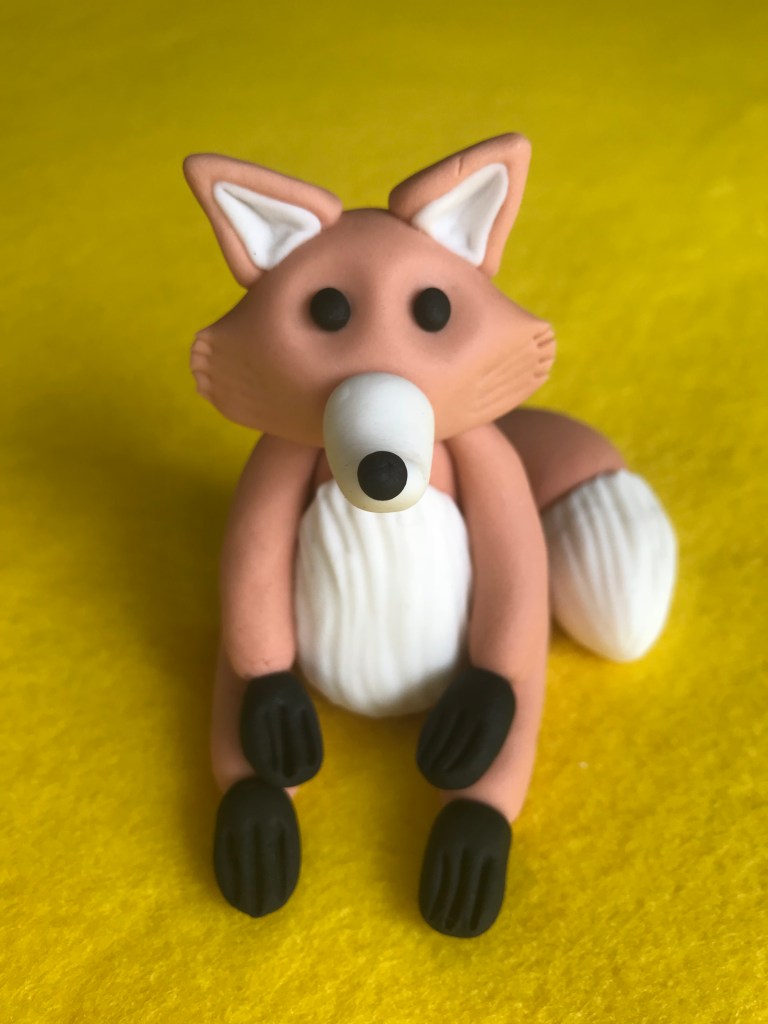
Toni Pike is a modern Indie author who has captured the same quirky and darkly humorous style of writing as Roald Dahl. You can find all of Toni Pike’s books here: https://www.amazon.com/stores/Toni-Pike/author/B009I70E8Y
Middle-grade series
There are several excellent middle-grade series.
My sons both loved Rick Riordan’s Percy Jackson. The first book in the series in Percy Jackson and the Lightning Thief. The hero, Percy Jackson, is half human and half Greek god. A quote from the Amazon blurb: I was just a normal kid, going to school, playing basketball, skateboarding. The usual. Until I accidentally vaporized my maths teacher. Now I spend my time battling monsters and generally trying to stay alive.
Talented Indie children’s author, Darlene Forster, has a wonderful series of middle-age books featuring a young girl, Amanda, who loves travelling to different countries. Everywhere Amanda goes, she falls into an adventure.
You can find all of Darlene’s Amanda books on Amazon US here: https://www.amazon.com/stores/Darlene-Foster/author/B003XGQPHA
Some writers start out as middle-grade writers and their targeted age group increases as their characters age. A famous example of such a writer is JK Rowling. The first two Harry Potter books were middle-grade stories. As her characters grew older, the books became more complicated, darker and much longer.
You can find the complete collection of Harry Potter books here: https://www.amazon.com/Harry-Potter-Complete-Collection-1-7-ebook/dp/B01B3DKROQ
Of course, if anyone reading this post hasn’t read Harry Potter I’ll eat Sir Chocolate – haha!

About Robbie Cheadle
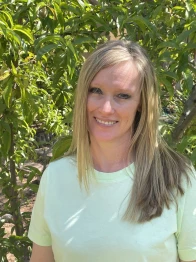
Award-winning, bestselling author, Robbie Cheadle, has published fifteen children’s book and three poetry books. Her work has also appeared in poetry and short story anthologies.
Robbie also has two novels published under the name of Roberta Eaton Cheadle and has horror, paranormal, and fantasy short stories featured in several anthologies under this name.
The eleven Sir Chocolate children’s picture books, co-authored by Robbie and Michael Cheadle, are written in sweet, short rhymes which are easy for young children to follow and are illustrated with pictures of delicious cakes and cake decorations. Each book also includes simple recipes or biscuit art directions which children can make under adult supervision.
Robbie and Michael’s new Southern African Safari Adventures series is aimed at teaching young children about Southern African wildlife in a fun and entertaining way. Each book contains a rhyming verse story about a particular animal, as well as illustrations by Robbie Cheadle, photographs and links to video footage about that animal.
Robbie’s blog includes recipes, fondant and cake artwork, poetry, and book reviews. https://robbiesinspiration.wordpress.com/
_____________________________________________
Want to be sure not to miss any of Robbie’s “Growing Bookworms” segments? Subscribe to Writing to be Read for e-mail notifications whenever new content is posted or follow WtbR on WordPress. If you found it interesting or entertaining, please share.
Welcome to the WordCrafter “Sarah” Book Blog Tour
Posted: May 6, 2024 Filed under: Book Promotion, Book Release, Books, Fiction, Giveaways, Historical Fiction, Western, Women in History, Women's Fiction, WordCrafter Book Blog Tours, WordCrafter Press | Tags: Historical Fiction, Kaye Lynne Booth, Sarah, western adventure, Women in History, Women in the West, Women in the West adventure series, Women's Fiction, WordCrafter Book Blog Tours 18 Comments
Welcome to the WordCrafter Sarah Book Blog Tour, where we’re celebrating the release of Book 2 in my Women in the West adventure series. We’ve got a five day tour planned and at every stop you can learn more about me, the author, and learn interesting historical facts which inspired my settings and characters through an interview, guest posts, and a review or two, and I’ll be giving away three digital copies of Sarah in the giveaway. You can follow the tour through the schedule below, but the links won’t work until each post goes live.
Tour Schedule
Mon. May 6 – “The Soiled Doves of the American West” – Writing to be Read
Tues. May 7 – “Utes in Glenwood Springs & the Legend of Chapita” – Roberta Writes
Wed. May 8 – Interview & Reading – Book Places
Thurs. May 9 – “‘Modern Medicine’ in the American West” – Writing to be Read
Fri. May 10 – Interview & Review – Patty’s Worlds
Giveaway
Leave a comment at each tour stop for five chances to win a free digital copy of Sarah.
The Soiled Doves of the American West

Prostitution in the Old West
In Colorado, the mining town of Cripple Creek had over 300 prostitutes in 1894, and it was home to one of the most high-end brothels in the mining towns of Colorado. The clients were taken by appointment only and were put through a thorough screening process where their finances were scrutinized, as well as their references. Appointments started at $200 an hour and the gentlemen had to have at least a million dollars in the bank to get one. The Old Homestead House brothel was run by the infamous Pearl DeVere and housed five women who squeezed into their corsets, petticoats and fancy dresses every evening to offer their ‘services’ for sale. The girls entertained in luxury on the ground floor, with music provided by the girls, gambling and alcohol available for their enjoyment, but the real entertainment occured on the second floor, in the girl’s rooms.
Although their profession was illegal, authorities and town founders chose to look the other way and add fees, fines and taxes and taxes collected to the town coiffers. Permits were required ply their trade for both madams and doves, and each girl had to undergo a weekly or monthly exam by the town doctor to be cleared for the permit, all of course, at a cost. There was a designated shopping day when the ‘respectable’ ladies stayed indoors so as not to be offended by their presence, and a ‘dove’ caught on the streets on a different day would bring a fine not only upon herself, but upon her madam, as well. And donations made to local causes such as church and school by the madam kept the ‘respectable’ ladies from complaining too much about the very existence of the houses of ill repute.
Less fortunate women in the profession, who did not work in such a high-end establishment were found up and down the street They received less for their services, with small make-shift shacks in which to entertain their customers. Independent doves who had no madam to offer a place to offer their services and provide protection from unsavory types, might provide services in the shadows of an alley for as little as a dollar gold piece.
Meet Big Nose Kate
Big Nose Kate Horony is one of the historical characters which the Women in the West adventure series is known for. In real life, she was an independent prostitute and one-time Madam, who made her own way in the west and was companion to the infamous John Henry “Doc” Holliday, and her portrayal in Sarah, as ‘the woman behind the man’ is a true and accurate story. Kate was there, and she really did go into the hills of the surrounding canyon and gather firewood to sell in order to keep a roof over Doc’s head as he lay dying of tuberculosis, too weak to practice his trade as a gambler.
One of the fascinating things about the Women in the West adventure series is the fact that there is a true-life historical female character in a supporting role, along with the strong female protagonist in each book. In Sarah, the supporting historical character is Mary Katherine Horony, (Big Nose Kate), who was the consort of the infamous dentist, gambler, and gunfighter, John Henry (Doc) Holliday. In this case, our character was the woman behind the man, and is little known for her own merit.
Born Mary Katherine Horoney on November 7, 1850, who lived in Mexico as a child, she was the daughter of a the personal surgeon to the Emporer Maximillian until her family immigrated to Iowa when she was 10. As the daughter of a prominant surgeon, Kate was educated and it is said that she spoke several languages.
At the age of 15, she and her younger siblings were orphaned when both of their parents died within a few months of each other, and the children were split up and placed into foster care. But Kate ran away within a year, and she and her sister traveled to St. Louis and by 1869, in a time when there were few opportunities for females to earn a living. A self-sufficient woman in the rough and tumble of the American west, Kate worked as a dance hall girl, a prostitute, or just about any way she could to make a buck.
In Texas, she crossed paths with John Henry “Doc” Holliday, a dentist turned gambler, who became a notorious gunfighter, and they were traveling companions, on and off, until his dying days. A strong woman with a hot Hungarian temper, she and Doc had their ups and downs as they frequented saloons and gambling houses in Texas, Arizona and New Mexico, living a life of vice and liquor. Even so, Kate was always there to back up Doc’s play, even setting a she on fire to distract his guards and breaking him out of house arrest to avaoid a lynch mob, after he stabbed a man who accused him of cheating at cards. It is said that for a time, Kate even had her own bordello in Tombstone, before she reunited with Doc after one of their many seperations.
When Doc was dying in Glenwood Springs, Colorado, a friend contacted her and she traveled to Glenwood Springs to care for her destitute lifelong companion, gathering firewood in the nearby hills to cover his room and board when he could no longer support himself. And that is where my fictional character of Sarah, or Hair of Fire, meets Kate in my story, after a harrowing ordeal of survival through the mountains of Colorado.
You can learn more about Kate and Doc in my guest post from the tour for Delilah: Book 1 on Kay Castenada’s Book Places blog site.
References
Brinks, Mellissa. 23 September, 2021. “What Life Was Really Like as an Old West Saloon Girl”. Ranker. https://www.ranker.com/list/life-of-a-wild-west-saloon-girl/melissa-brinks
Whitley, Carla Jean. 10 March 2017. “To Doc From Kate – But Who Was Kate?” Post Independent. https://www.postindependent.com/news/local/to-doc-from-kate/
Hughs, Jessica. 11 September 2022. “10 Authentic Old West Towns”. Uncover Colorado. https://www.uncovercolorado.com/wild-west-towns-in-colorado/
Old Homestead House Museum, Cripple Creek, Colorado,
Bowmaster, Patrick A. “A Fresh Look at ‘Big Nose Kate'”. Tombstone History Archives. http://www.tombstonehistoryarchives.com/a-fresh-look-at-big-nose-kate.html
Van Ostrand, Maggie. 2017. “Katie Elder a.k.a. Big Nose Kate, Her True Story”. Goose Flats Graphics & Publishing. Southern Arizona Guide: https://southernarizonaguide.com/katie-elder-her-true-story-by-maggie-van-ostrand/
Williams, Joseph A. “The Real Story of Doc Holliday and Big Nose Kate”. Old West. https://www.oldwest.org/doc-holliday-big-nose-kate/
“Big Nose Kate – Doc Holliday’s Sidekick”. Legends of America. https://www.legendsofamerica.com/we-bignosekate/
28 February 2022. “Couples with History: Glewood Springs Loves Stories”. Glenwood Springs Blog. https://visitglenwood.com/blog/2022/02/couples-with-history-glenwood-springs-love-stories/
“The True Story of Katie Elder”. Notes from the Frontier. https://www.notesfromthefrontier.com/post/the-true-story-of-katie-elder
Book Trailer
About the Book
Sarah is a young girl trying to make a place for herself in the world.
Sarah is not the young girl who was stolen away from Delilah anymore. Now she is Hair of Fire, mate of Three Hawks, even as she blossoms into a young woman and tries to make a place for herself among the Ute tribe.

When she is stolen away from the life she’s made with the Utes, she struggles to survive in the heart of the Rocky Mountains. A streak of stubbornness and determination take this tough, feisty heroine up against wild beasts of the forest and the rugged mountain landscape to Glenwood Springs, Colorado, where she receives a less than welcoming reception by some.
Will this young woman find her way back to the Ute tribe, which she’s come to think of as family, or will she discover a place among the colorful inhabitants of the Colorado hot springs and mining town?
Follow along on her journey to learn who she truly is and where she belongs in this rough, and often hostile frontier.
If you like strong and capable female protagonists, you’ll love Sarah.
Purchase Link: https://books2read.com/Sarah-Women-in-the-West
About the Series

The Women in the West adventure series features strong female protagonists in a setting filled with hardship, which many believed did not fit well with the female constitution. Women on the frontier were few, and most of those were included in a family unit. Single and widowed women did exist on the frontier, as did those whose husbands just never came home for whatever reason, went back to the family unit in most cases. Women who chose to go it alone, defying societal expectations were rare. Those who did, chose a hard life and had to have backbone to survive.
While my protagonists are fictional, they are representative of strong women who did make a way for themselves, out of choice or necessity, and each book introduces a fictionalized version of one such historical female character who plays a supporting role in the story. In Delilah, it was Baby Doe Tabor. In Sarah, it is Big Nose Kate. And Marta will feature Clara Brown.
About the Author
For Kaye Lynne Booth, writing is a passion. Kaye Lynne is an author with published short fiction and poetry, both online and in print, including her short story collection, Last Call and Other Short Fiction; and her paranormal mystery novella, Hidden Secrets; Book 1 of her Women in the West adventure series, Delilah, and her Time-Travel Adventure novel, The Rock Star & The Outlaw. Kaye holds a dual M.F.A. degree in Creative Writing with emphasis in genre fiction and screenwriting, and an M.A. in publishing. Kaye Lynne is the founder of WordCrafter Quality Writing & Author Services and WordCrafter Press. She also maintains an authors’ blog and website, Writing to be Read, where she publishes content of interest in the literary world.

That wraps up the first stop on the tour. Thank you all for joining us. Don’t forget to leave a comment for a chance at a free digital copy of the book. Join us tomorrow over at [ ], where I’ll be guest posting on how the history of the Ute Indians helped me choose my settings.
_______________________________
Book your WordCrafter Book Blog Tour today!








